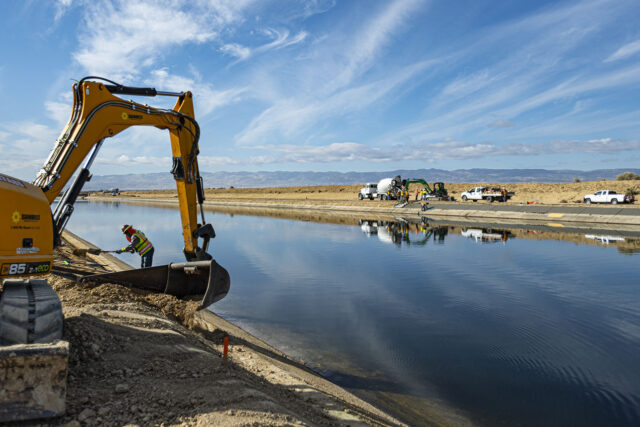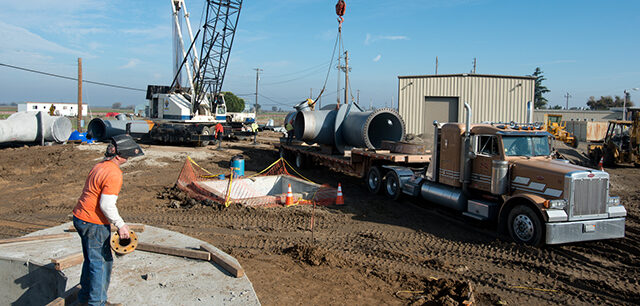As California responds to yet another drought and prepares for a future of greater climate extremes, securing funding to boost the water system’s resilience is a top priority. One go-to funding source over the last two decades has been state general obligation bonds.
In dollar terms, GO bonds play a relatively small role in water system spending, yet they punch above their weight when it comes to filling critical gaps. In fact, bonds have helped fund water’s fiscal orphans—critical activities that lack stable, long-term funding sources—including providing safe drinking water for small communities and managing floods, stormwater, and ecosystems.
How have recent water bonds been spent?
California spends about $37 billion annually to supply communities and farms with water, prevent water pollution, protect freshwater ecosystems, and manage floods. The bulk of this funding (84%) comes from local sources (primarily water and wastewater bills), and the rest from state (13%) and federal (3%) contributions. Water bonds make up about 45% of the state’s share, or 5% of total system spending. This includes about $1 billion a year for new project support, and a similar amount to reimburse principal and interest on past bonds.
Since 2000, California voters have approved eight water bonds dedicating $27 billion to various water projects. So far, $17 billion has been spent, including roughly $4 billion each for ecosystem restoration and the management of floods and stormwater. About $1.2 billion has gone towards California’s effort to improve drinking water and wastewater systems. Recent bonds have also supported the launch of new programs that do not yet have robust local funding streams, such as the Sustainable Groundwater Management Act.
Proposition 1, the 2014 water bond, allocates $7.5 billion to address California’s drought-challenged water system across seven project categories. Of this total, $4.1 billion has already been spent, including roughly $500 million for safe drinking water and wastewater programs in low-income communities, $600 million for drought preparedness, and $1.4 billion for ecosystem restoration. Funding for new water storage projects—which involve long lead times—has been the slowest out the door; just over $150 million of the $2.7 billion authorized has been spent, though most remaining funds are now earmarked for seven qualifying projects. These projects are designed to improve drought resilience for freshwater ecosystems, in addition to shoring up supplies for cities and farms.

Proposition 68, the latest water bond to pass in mid-2018, allocates $4.1 billion for projects focused on parks and outdoor access, ecosystem protection, and climate resilience. Of this total, $2.5 billion had been spent as of May 2021.

Both Prop 1 and Prop 68 explicitly direct some funds to historically underserved communities. To date, Prop 1 awards include $700 million for a wide range of projects to support low-income communities, including ecosystem restoration, parks and public access, integrated water management, and safe drinking water. Prop 68 awards include another $820 million for improving drinking water quality and expanding park and open space access in these communities.
Bonds: Flexible but not reliable
One challenge with bonds is that they are not a reliable, long-term funding source. For example, 80% of the funds approved under Prop 1 and Prop 68 are already spoken for. To keep the money flowing, voters are usually asked to approve new water bonds every few years. Californians have generally been supportive, but the timing isn’t always right. The Great Recession prompted the legislature to delay putting Prop 1 on the ballot for four years. In November 2018, voters rejected Prop 3, an $8+ billion water bond—the first “no” vote on a water bond since the mid-1990s. And in 2020, the pandemic recession again delayed consideration of a new water bond—raising concerns about the ability to keep up the pace in meeting critical investment needs.
This year, the unexpected state budget surplus may avert the near-term need for another bond. Governor Newsom’s May budget proposal includes over $5 billion for investments in safe drinking water, ecosystem and forest management, and climate resilience. But since this is also a one-time source of funding, water’s fiscal orphans will need additional funds in coming years. In a warming world, many of these fiscal orphans are becoming key parts of the state’s attempt to boost climate resilience. Broadening the funding portfolio beyond bonds by tapping additional sources—such as state and local fees, taxes, and assessments—could help provide more reliable, long-term support.





